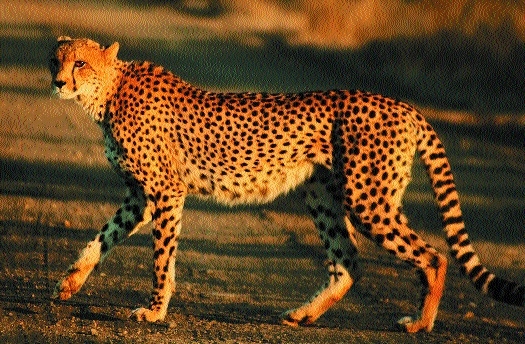Once upon a time, Vidarbha was habitat of Cheetah
16 Jan 2022 09:19:54

By Kartik Lokhande :
With the release of the report ‘Action Plan for Introduction of Cheetah in India’ by Wildlife Institute of India, National Tiger Conservation Authority, and Madhya Pradesh Forest Department, much is being talked about reintroduction of Cheetah in India. Though the Cheetah is proposed to be reintroduced in Kuno National Park, the report offers historical insight about the animal and brings out that Vidarbha region of Maharashtra was a habitat for Cheetah at least 131 years ago. Examining the chronolgy of extinction, the report estimates that India had 414 Cheetahs. As far as Vidarbha region is concerned, the report cites an account by Burton (1920) in which it was mentioned that three Cheetah skins were seen in Melghat forest. As per the records available so far, this mention from the year 1890 appears to be the oldest recorded presence of Cheetah in Vidarbha region. The same year, one Cheetah was shot in Akola, as per the account by King Martin (1935).
King Martin’s account also mentioned that Cheetah ‘lived, bred, preyed on antelope and gazelle, trapped by villagers and upcountry rajas’ in 1892 in Akola district. Two or three Cheetahs were seen and one was shot in 1894 in Dhamangaon as per Burton’s account of 1920. The same year, one Cheetah was shot in Melghat forests. Later on, in 1896, two Cheetah cubs were found and reared in Berar (now Amravati Division), as per the account of Rodon (1897). Between 1903 and 1923, three cheetahs were ‘procured’ and cheetahs were ‘negligible in number’ in Central Provinces (comprising Vidarbha, Madhya Pradesh, and Chhattisgarh), states the latest report citing the account of Dunbar Brander (1923). In 1912, one Cheetah was reported in Buldana district, with its mate ‘believed trapped by Pardhis’ and ‘only tracks seen’. Interestingly, Cheetah was present in Nagpur and Yavatmal districts too of Vidarbha.
The latest report cites a June 1916 record of ‘IOL Agriculture and Forests’ mention of ‘permission to trap Cheetah for Nizam, Hyderabad’. However, details are not available as ‘The file is missing in the National Archives of India’. There are other mentions of presence of Cheetahs in Central provinces in 1919 and 1920 too. The latest report cautions that Cheetah’s story in Asia ‘may well be ending’, ‘unless they are reintroduced into India from Africa’. It tries to look into the causes of disappearance of Cheetah from Indian landscape. According to the report, Cheetahs in their most preferred habitat such as grasslands and semi-arid tracts of Kathiawar (Saurashtra, Gujarat) and elsewhere ‘came under severe pressure earlier than those found on the edges of forests, including sal forests and grassy glades within them in Central India’.
“During this period, Cheetahs were subjected to their being taken from the wild for coursing blackbuck by Pardhi tribals and others for their princely patrons. That apart, they were also being targeted by British and Indian ‘sportsmen’,” the report adds. It quotes Prof Mahesh Rangarajan’s research pointing out that the administrative policy of British India “played a major role in its extinction”. The British government of the time ‘gave rewards for destruction of not only adult Cheetahs, but also for their cubs from about 1871 onwards’.
‘Cheetah can be reintroduced in Vid, but consider ecological history’ Kaustubh Pandharipande, Director, Foundation for Economic and Ecological Development, has conducted an in-depth study of the grasslands of Vidarbha region. According to him, Cheetah can be reintroduced in Vidarbha but the ecological history of the region has to be taken into account. “Particularly the western part of Vidarbha region had good grasslands long ago. These grasslands were an important part of the region’s ecology and formed the habitat for Cheetah, Lesser Florican, Great Indian Bustard etc,” Pandharipande told ‘The Hitavada’. However, the British treated those as wastelands. For, they considered grasslands as of no use for revenue-earning purposes. Gradually, these grasslands were put to revenue-yielding use and were converted into agricultural lands. In years that followed, Vidarbha became a ‘cotton belt’. “However, the adverse impact on grasslands also led to disappearance of Cheetahs and other species from this region,” he added. As far as present situation is concerned, Pandharipande said, Cheetah can be reintroduced in Vidarbha region. “For the purpose, Forest Department will have to factor in ecological history of the region, conduct deeper study of habitat, and rope in all stakeholders including local communities. Else, reintroduction without attention to details may just lead to man-animal conflict particularly in western Vidarbha,” he observed.
